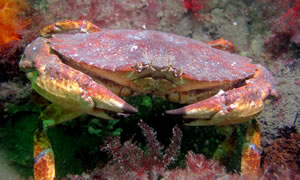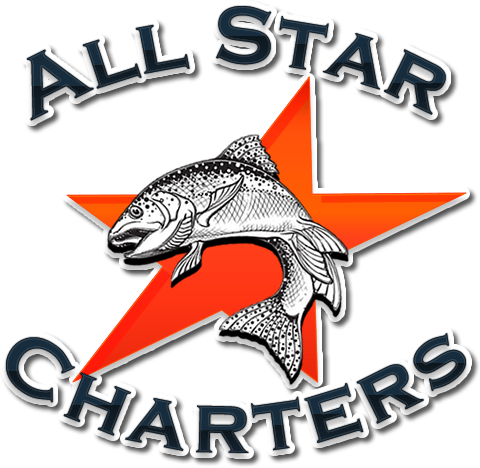
Crab Fishing
Recreational Crab Fishing
Crab Fishing ★ All Star Fishing Charters
Recreational Crab Fishing
Crabbing on Puget Sound
Crabbing is a fun and easy add-on to your fishing trip when the season is open. We drop recreational pots in proven crabbing areas and check them during your charter, giving you a hands-on experience and a great chance to bring home fresh Dungeness or Red Rock crab.
All gear, bait, and measuring are handled by your captain, and we keep only legal-size male crab. Crabbing is family-friendly, exciting for kids, and pairs perfectly with bottom fishing or salmon trips. Optional crab cooking is available upon request, making it easy to enjoy your catch the same day.
Dungeness Crab (Cancer magister)
The Dungeness crab is one of the most prized and recognizable species in Washington State’s marine waters. Highly valued for its sweet, delicate meat, the Dungeness crab supports a strong commercial and recreational fishery and is a favorite harvest for many Puget Sound anglers. This hard-shelled crustacean ranges from the Aleutian Islands in Alaska all the way down to central California, thriving in cold, nutrient-rich Pacific waters.
Dungeness crab are crustaceans, meaning they have a hard exterior shell (exoskeleton) that they must shed and regrow as they grow. Adults typically measure 6–7 inches across the carapace, though some can reach up to 10 inches. Their shells are usually purple-tinged, gray, or brown, with the characteristic white-tipped claws that make them easy to identify. Males grow larger than females and are the primary target of the recreational fishery due to regulations designed to protect breeding populations.
In Puget Sound, Dungeness crab are most abundant north of Seattle, throughout Hood Canal, and near the outer Pacific coast. They prefer sandy or muddy substrates, often settling near eelgrass beds that offer protection and food. Because they move with tides and seasonal cycles, abundance can vary depending on the time of year. Recreational crabbing typically involves crab pots, though ring nets, dip nets, and wading in shallow water are also used during summer months.
Dungeness crab play an important role in the marine ecosystem, feeding on clams, small fish, shrimp, worms, and other bottom-dwelling organisms. Their movements, population strength, and legal harvest seasons are closely monitored by the Washington Department of Fish & Wildlife (WDFW). When open, recreational crabbing is a popular summer activity, especially in areas accessible from Everett, Edmonds, and Seattle.



Red Rock Crab (Cancer productus)
Red rock crab are another common crustacean found throughout Washington’s marine waters, often encountered by crabbers targeting Dungeness. Although they are smaller and less abundant than Dungeness crab, red rock crab are aggressive, strong, and strikingly colorful, making them a memorable catch for both recreational fishers and wildlife observers.

Crabbing FAQ
Is crabbing good for kids and beginners?
Yes. Crabbing is very family-friendly and easy for all ages. Kids love helping pull pots and seeing what’s inside.
What types of crab can we catch?
Puget Sound offers Dungeness and Red Rock crab. We keep only legal-size males per state regulations.
Do I need a special license?
Yes. You’ll need a Washington shellfish license, available online or at local retailers. Many guests purchase it the morning of their trip.
When is crabbing season open?
Crabbing seasons vary by marine area, typically mid-summer through early fall. We always follow the latest WDFW regulations.
Is the gear included?
Yes. We provide all pots, bait, lines, and measuring tools. Your captain handles deployment and retrieval.
Can we cook the crab after the trip?
Yes — optional crab cooking is available upon request, so you can enjoy fresh-cooked Dungeness the same day.
How many crab can we expect to catch?
Catch rates vary by area and time of year, but Puget Sound commonly produces good numbers of legal Dungeness during open seasons.
Can we keep everything in the pot?
No. Washington law requires us to release any females or undersized crab. Your captain will measure each one.
Can we add crabbing to any fishing trip?
Crabbing is an easy add-on to bottom fishing and salmon charters when the season is open. Just select the option at checkout or ask when booking

